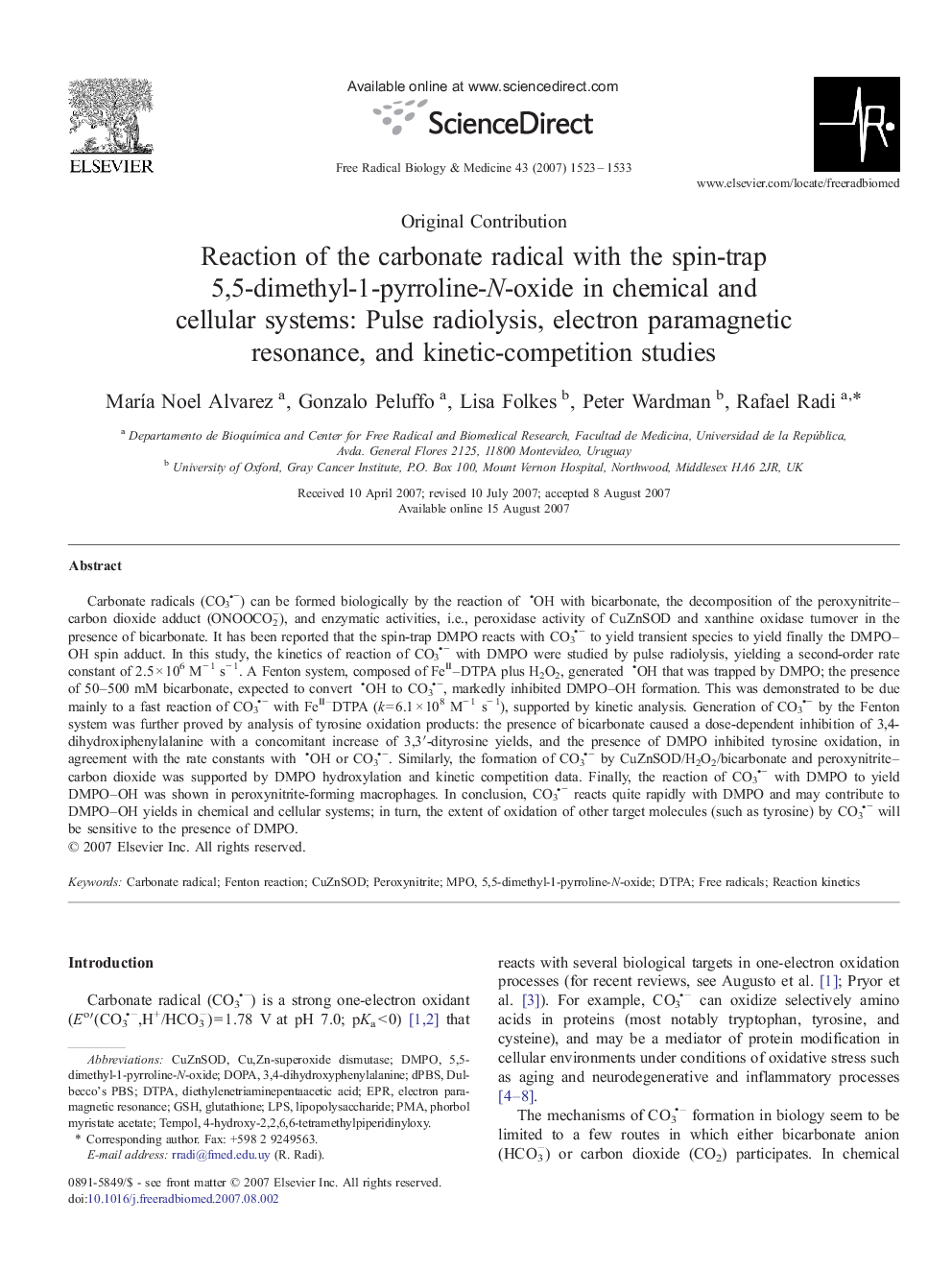| کد مقاله | کد نشریه | سال انتشار | مقاله انگلیسی | نسخه تمام متن |
|---|---|---|---|---|
| 1911270 | 1046809 | 2007 | 11 صفحه PDF | دانلود رایگان |

Carbonate radicals (CO3−) can be formed biologically by the reaction of OH with bicarbonate, the decomposition of the peroxynitrite–carbon dioxide adduct (ONOOCO2−), and enzymatic activities, i.e., peroxidase activity of CuZnSOD and xanthine oxidase turnover in the presence of bicarbonate. It has been reported that the spin-trap DMPO reacts with CO3− to yield transient species to yield finally the DMPO–OH spin adduct. In this study, the kinetics of reaction of CO3− with DMPO were studied by pulse radiolysis, yielding a second-order rate constant of 2.5 × 106 M− 1 s− 1. A Fenton system, composed of FeII–DTPA plus H2O2, generated OH that was trapped by DMPO; the presence of 50–500 mM bicarbonate, expected to convert OH to CO3−, markedly inhibited DMPO–OH formation. This was demonstrated to be due mainly to a fast reaction of CO3− with FeII–DTPA (k = 6.1 × 108 M− 1 s− 1), supported by kinetic analysis. Generation of CO3− by the Fenton system was further proved by analysis of tyrosine oxidation products: the presence of bicarbonate caused a dose-dependent inhibition of 3,4-dihydroxiphenylalanine with a concomitant increase of 3,3′-dityrosine yields, and the presence of DMPO inhibited tyrosine oxidation, in agreement with the rate constants with OH or CO3−. Similarly, the formation of CO3− by CuZnSOD/H2O2/bicarbonate and peroxynitrite–carbon dioxide was supported by DMPO hydroxylation and kinetic competition data. Finally, the reaction of CO3− with DMPO to yield DMPO–OH was shown in peroxynitrite-forming macrophages. In conclusion, CO3− reacts quite rapidly with DMPO and may contribute to DMPO–OH yields in chemical and cellular systems; in turn, the extent of oxidation of other target molecules (such as tyrosine) by CO3− will be sensitive to the presence of DMPO.
Journal: Free Radical Biology and Medicine - Volume 43, Issue 11, 1 December 2007, Pages 1523–1533